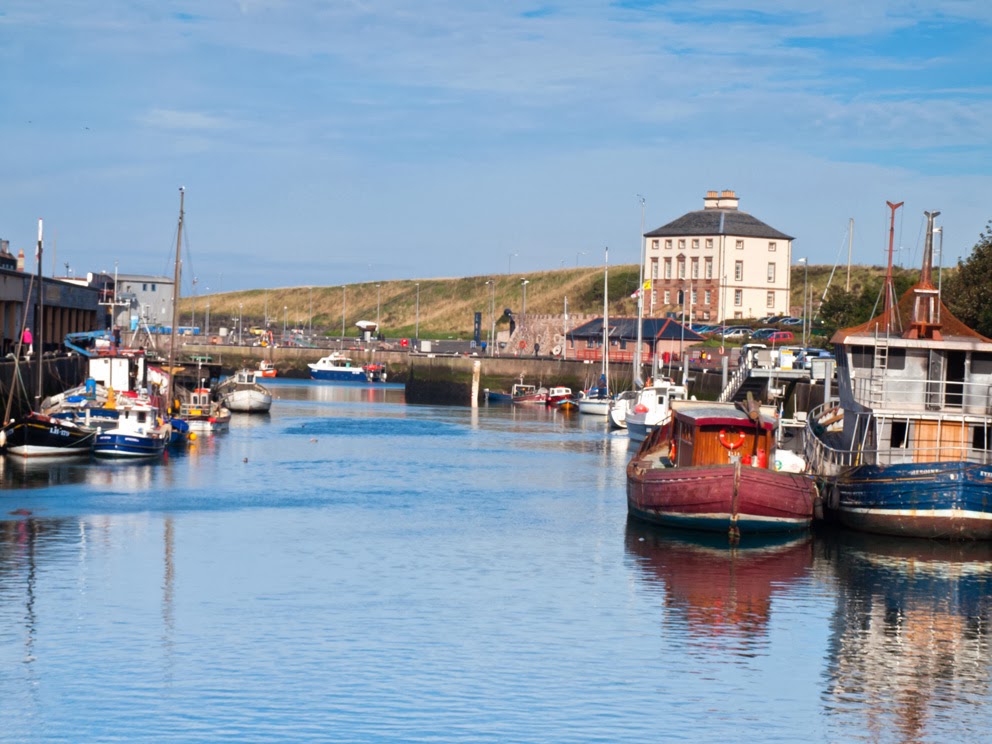Eyemouth is a small town Berwickshire in the Scottish Borders with a population of about 3,420 people (2004).
The town's name comes from its location at the mouth of the Eye Water. The Berwickshire coastline consists of high cliffs over deep clear water with sandy coves and picturesque harbours. In the main it is a fishing port, although notable buildings in the town include Gunsgreen House and a cemetery watch house built to stand guard against the Resurrectionists (body snatchers). Many of the features of a traditional fishing village are preserved in the narrow streets and vennels – giving shelter from the sea and well suited to the smuggling tradition of old.
 |
| Eyemouth Harbour |
The life of the historical hero
of the town, William Spears (1812–1885), is celebrated by the dramatic bronze
statue in Eyemouth Market Place, where he stands pointing the way to Ayton, the
scene of his peaceful demonstration. At great personal risk, Spears led a
revolt against the tithes on fish levied by the Church of Scotland, even after
the great Disruption of 1843 when most fishermen left the established Church to
join other congregations.

In 1997, Eyemouth
was given EU funding from a scheme to regenerate declining fishing villages and
raised matching funds itself to construct a deep water extension to the
Harbour. Eyemouth
Harbour








No comments:
Post a Comment